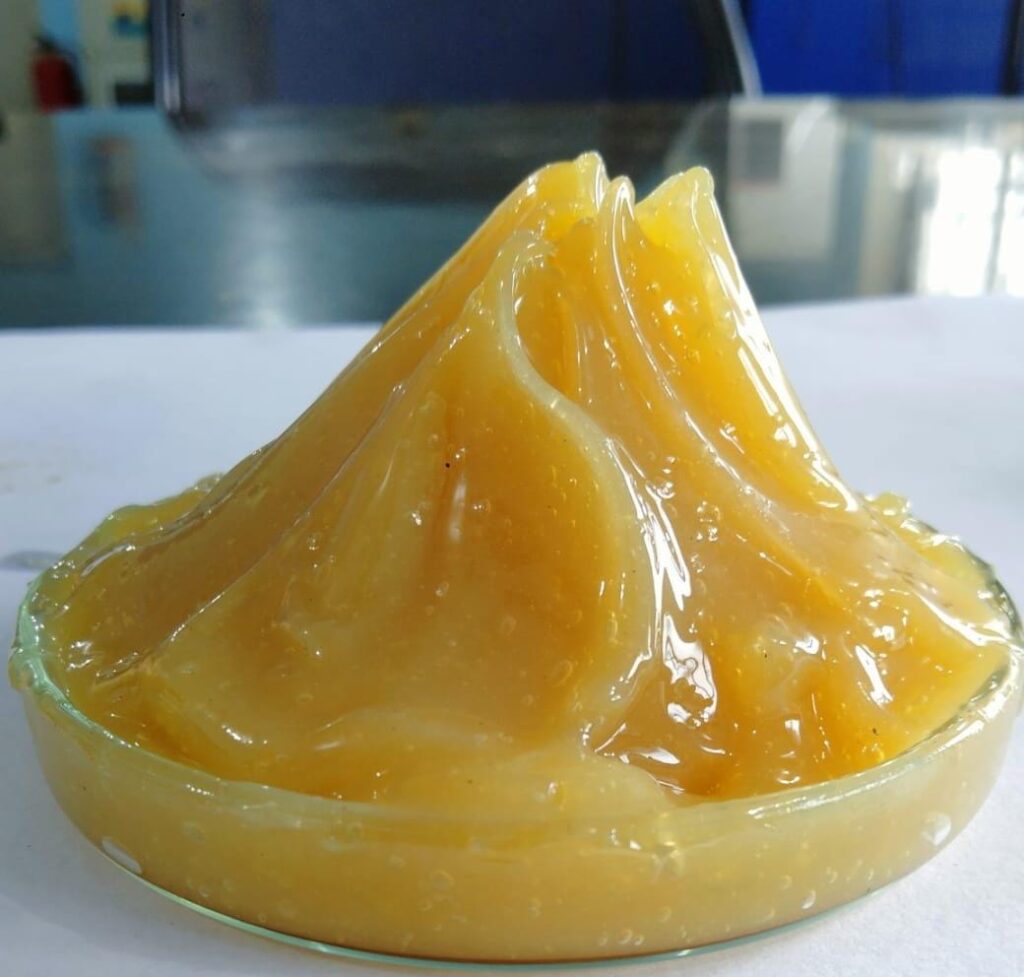RBM OIL CORPORATION MANUFACTURER OF GREASE IN PUNE INDIA
a thick, oily lubricant consisting of inedible lard, the rendered fat of waste animal parts, or a petroleum-derived or synthetic oil containing a thickening agent.
White grease is made from inedible hog fat and has a low content of free fatty acids. The yellow shade is made from darker parts of the hog and may include parts used to make white shade. Brown contains beef and mutton fats as well as hog fats. Fleshing grease is the fatty material trimmed from hides and pelts. In some factories, food offal is used along with animal carcasses, butcher-shop scraps, and garbage from restaurants for the recovery of fats.
Greases of mineral or synthetic origin consist of a thickening agent dispersed in a liquid lubricant such as petroleum oil or a synthetic fluid. The thickening agent may be soap, an inorganic gel, or an organic substance. Other additives inhibit oxidation and corrosion, prevent wear, and change viscosity. The fluid component is the more important lubricant for clearances between parts that are relatively large, but for small clearances, the molecular soap layers provide lubrication.
tribology
the study of the interaction of sliding surfaces. It includes three subjects: friction, wear, and lubrication. There is a difficulty in that friction is generally characterized as a branch of physics or mechanical ENGINEERING, wear is part of the material science of metallurgy, while lubrication is a branch of chemistry. Tribology is thus a complex interdisciplinary subject.
The phenomena considered in tribology are among the most fundamental and most common of those encountered by humans in interaction with their largely solid environment. Many manifestations of tribology are beneficial and, indeed, make modern life possible. Many other effects of tribology, however, constitute serious nuisances, and careful design is necessary to overcome the inconvenience arising from excessive friction or wear. On an overall basis, friction uses up, or wastes, a substantial amount of the energy generated by mankind, while a large amount of productive capacity is devoted to replacing objects made useless by wear.
Friction has been studied as a branch of mechanics for many hundreds of years and its laws, as well as satisfactory methods of estimating the magnitude of friction, have been known for nearly two centuries. The mechanism of friction, namely, the exact process by which energy is lost as two surfaces slip past each other, is understood only in an incomplete way.
FORMULA 1 GREASE
Wear is the removal of material from a solid surface as a result of the mechanical action exerted by another solid. It is such a universal phenomenon that rarely do two solid bodies slide over each other or even touch each other without measurable material transfer or material loss. Thus, coins become worn as a result of continued contact with human fingers; pencils become worn after sliding over the paper, and rails become worn as a result of the continued rolling of train wheels over them.
Only living things (e.g., bone joints) are in general immune to the permanent damage caused by wear because only they have the property of healing through regrowth. And even a few living things do not heal themselves (e.g., teeth in humans).

SYNTHETIC GREASE
The systematic study of wear has been severely hampered by two factors: first, the existence of a number of separate wear processes, which has led to much confusion, especially in terminology; second, the difficulties caused by the small amounts of material involved in wear processes.
These difficulties were greatly alleviated when radioactive isotopes of the common engineering metals (iron, copper, chromium, etc.) became available in the 1940s; tracer techniques using these radioisotopes permit measurements of wear, even in small amounts, while it is occurring. This has made it possible to identify types of wear and discover the laws of wear.


